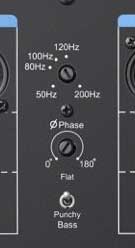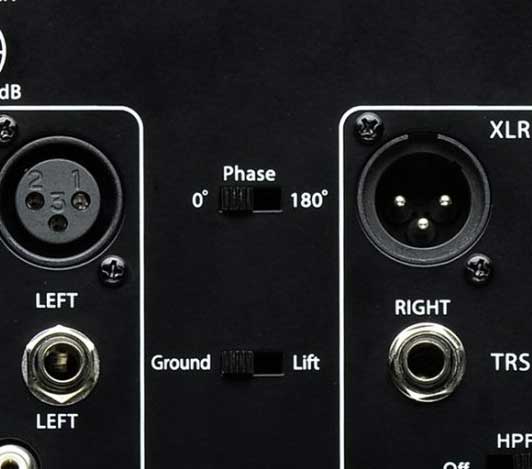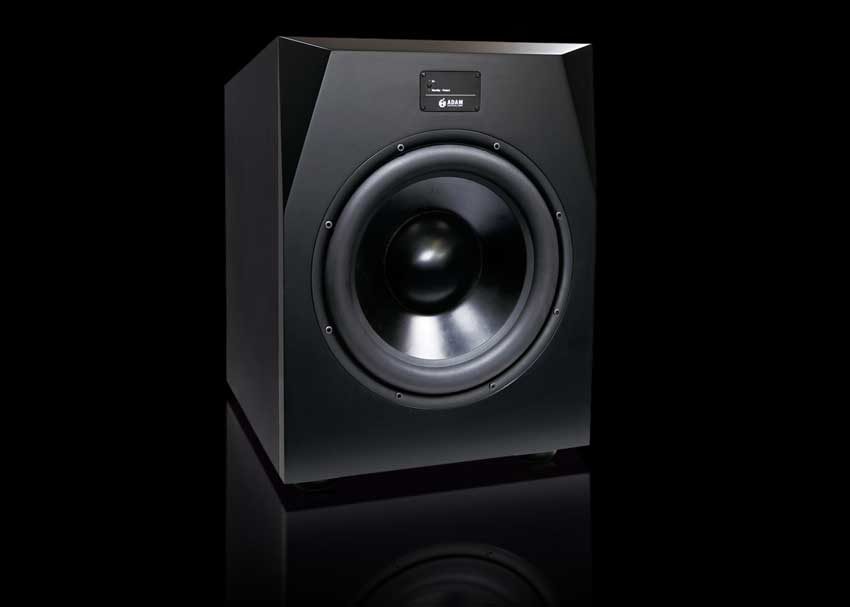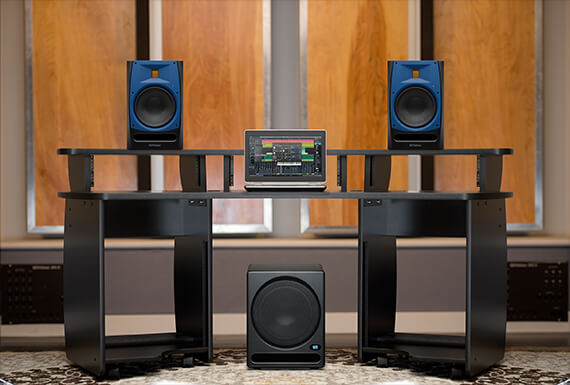Congratulations — you’ve just added a studio monitor subwoofer to your home recording rig! But where should you place your new sub? And what does the “Phase” switch do? This guide will help you find the right spot for your studio subwoofer, and phase-align it to your main stereo studio monitors.
Why Sub Placement Matters
It’s a common misconception that subwoofer placement doesn’t really matter, because low bass frequencies are not directional, and it’s nearly impossible to determine their point of origin in a given space. It’s true that we can’t perceive directionality for low bass frequencies — that’s why you only need one subwoofer, instead of a stereo pair of subs. That said, it does matter where you place your one sub in a room, because your walls, floors, and large furniture can affect how the studio monitor subwoofer reacts.
Where Does My Studio Monitor Subwoofer Go?
To find a good spot for your sub, ironically, you should start by placing it somewhere that makes no sense: in your listening position. Place your studio monitor subwoofer right in the spot where you usually put your chair. Point it toward the center of the room. Run your main stereo outputs into your sub, and run the subwoofer’s outputs into your left and right monitors (for most setups). Set the crossover frequency to about 80 Hz, play some music you know well through your monitors and sub, and slowly turn up the sub’s volume until you can hear it working when you’re right next to it. Then move all around the room and listen for where the bass sounds nice and smooth. Chances are, you’ll find areas of the room where the bass sounds louder or quieter. When you’ve found a “happy medium” spot in the room where the bass blends into the mix, swap the position of yourself with the sub: carefully move your subwoofer into the new spot, and stand in your regular listening position and listen. Try moving the sub a foot or two in any direction, and use your ears to determine where your new sub sounds best. Yes, subwoofers are heavy, and this takes some elbow grease, but it’s the best way to find your subwoofer’s forever home.
Since every room is unique, there’s really only one rule for sub placement: DON’T start by placing your studio monitor subwoofer right next to a solid wall, or in a corner. This could artificially boost its sound pressure level by some 12 to 18 dB, and it’ll throw off your mixes.

Some subs have a variable phase knob, for more precise control.
What Does the Phase Switch Do?
Almost every studio monitor sub has a switch labeled “Phase” or “Polarity.” This polarity/phase switch lets you toggle between 0 degrees or 180 degrees — sometimes labeled “Normal” and “Reverse.” Some studio monitor subwoofers have a variable phase control — a knob that gives you more precise control over the phase of your signal.
If your subwoofer is placed farther away from your ears than your main speakers, flipping the phase switch can help the two signals line up, so you’ll hear a more cohesive mix.
To phase-align your studio monitor subwoofer, you’ll need to use your ears. Play some familiar music through the system, and recruit a buddy to toggle the phase switch while you listen from your listening position. If you don’t hear a difference, great! That means your subwoofer placement isn’t causing (much of) a phase discrepancy one way or the other. If you do hear a difference, choose the phase setting that results in the loudest bass, whether that’s 0 degrees or 180 degrees.
If your subwoofer happens to have a variable-phase knob as well as a switch, enlist your buddy’s services to slowly sweep across the range of the knob until the bass is loudest. Alternatively, you can sweep until you hear the least bass — and then flip the 0/180 phase switch to the opposite setting, at which point you’ll hear the bass at its loudest.

Look for the Phase switch on the back panel of your studio sub.
Room Modes and Standing Waves
When it comes to room acoustics, installing a new subwoofer can cause some problems to make themselves apparent. All rooms have room modes, or resonant frequencies, around 20-200 Hz — the same frequencies your sub is designed to reproduce. When your sub spits out these low frequencies, and the resulting sound waves are reflected between parallel surfaces, standing waves can occur, reinforcing specific low frequencies unnaturally. This is why every professional studio has some kind of acoustic treatment on the walls, ceilings, and corners. It’s wise to install bass traps and acoustic foam panels to help improve your room’s acoustics. It’ll make your speakers sound better!
Add a Studio Monitor Subwoofer for Lower Bass, Not Louder Bass
It’s important to remember that adding a dedicated studio monitor subwoofer to your setup is not about achieving louder bass — it’s about achieving lower bass. Sure, your main studio monitors may be capable of reproducing sub-bass frequencies down to 20 Hz, but chances are, unless your main stereo monitors are loaded with 12″ or 15″ woofers being driven by at least a couple hundred watts each, there’s a significant roll-off once they get down below 30-40 Hz or so. Playing back test tones will confirm your suspicions about your monitors’ ability to reproduce sub-bass. Besides, you want to be able to hear those 18 kHz dinosaur footsteps.
And since reproducing low frequencies requires much more power than reproducing mids and highs, dedicating a subwoofer to everything below 80-100 Hz or so makes the most efficient use of available power — freeing up your main stereo monitors to reproduce the critical midrange. This efficient use of power is also why big professional PA systems use dedicated subwoofers.
Your new studio monitor subwoofer will take over where your main stereo monitors leave off, reproducing the low frequencies that are present in your mixes (whether you know it or not). This dedicated sub will help you hear exactly what’s in the tracks — so when your mix is eventually played back on a big PA system (or someone’s home stereo), it’ll sound how you intended.





Leave a Reply